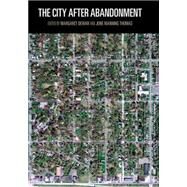- ISBN: 9780812244465 | 081224446X
- Cover: Hardcover
- Copyright: 10/17/2012
A number of U.S. cities, former manufacturing centers of the Northeast and Midwest, have suffered such dramatic losses in population and employment that urban experts have put them in a class by themselves, calling them "rustbelt cities," "shrinking cities," and more recently "legacy cities." This decline has led to property disinvestment, extensive demolition, and abandonment. While much policy and planning has focused on growth and redevelopment, little research has investigated the conditions of disinvested places and why some improvement efforts have greater impact than others. The City After Abandonmentbrings together essays from top urban planning experts to focus on policy and planning issues related to three questions. What are cities becoming after abandonment? The rise of community gardens and artists' installations in Detroit and St. Louis reveal numerous unexamined impacts of population decline on the development of these cities. Why these outcomes? By analyzing posthurricane policy in New Orleans, the acceptance of becoming a smaller city in Youngstown, Ohio, and targeted assistance to small areas of Baltimore, Cleveland, and Detroit, this book assesses how varied institutions and policies affect the process of change in cities where demand for property is very weak. What should abandoned areas of cities become? Assuming growth is not a choice, this book assesses widely cited formulas for addressing vacancy; analyzes the sustainability plans of Cleveland, Buffalo, Philadelphia, and Baltimore; suggests an urban design scheme for shrinking cities; and lays out ways policymakers and planners can approach the future through processes and ideas that differ from those in growing cities.







